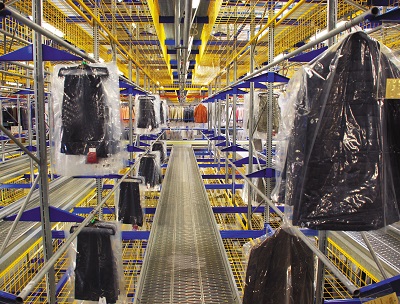
BY SANDY SMITH
As the spring 2020 season was upon us, magazines were touting some interesting new apparel trends: white dresses, neon colors, bootcut jeans and warm-weather leather.
Then COVID-19 shut down retailers, sending us all to our sweatpants and T-shirts and leaving those white, leather, bootcut items unsold. A study by Boston Consulting Group, released by the Sustainable Apparel Coalition, found that fashion and luxury were second only to travel and tourism in experiencing the most impact.
It did not look to be a mere blip, either. The study predicted a drop in sales of as much as 38% in 2020. Executives surveyed anticipated that it might take a year to get apparel sales back on track. “Within a market that depends around 80% on offline sales, the impact of continued shelter-in-place orders and store closures will be tremendous,” the authors wrote.
The fallout has multiple tentacles. Apparel manufacturers said they were encountering cancelled orders. A number of U.S.-based retailers are heading toward bankruptcy.
In some ways, COVID-19 has hastened some of these trends for the apparel sector, an industry that was in the midst of significant changes before the pandemic. Some of the challenges may be insurmountable. But others can be aided by the expertise of material handlers.
A shifting industry
Even before COVID-19, apparel was feeling a labor pinch, said Greg Meyer, vice president of sales and marketing for MHI member Eurosort. “That was the biggest issue, not being able to get reliable folks to work in facilities. They were trying to automate as many processes as they could to help supplement labor or to make sure that the folks that are there are able to work at greater efficiency.”
The senior account executive for MHI member KNAPP, JR White, agreed. He pointed to a need for a “reduction of touching and processing steps required to get items out of the facility” as a pre-pandemic challenge for apparel retailers.
The pandemic, then, only exacerbated those workforce issues—with an increased number of workers calling out sick or afraid to work, White said.
Add in the need for social distancing and a dramatic uptick in e-commerce, and the perfect storm was created. “If you had an omnichannel inventory, you were in good shape,” Meyer said. “But it became a question of how you leverage the workers and the automation since everyday was a peak day that they weren’t expecting. There were a lot of rules and a lot of uncertainty that got thrown into the mix, and not just in the distribution side.”
It also changed—dramatically—the product mix. Companies struggled, if they couldn’t make the shift “from more formal to more casual,” said Jusuf Buzimkic, senior vice president of sales and engineering for KNAPP. “For them, business has significantly dropped off.”
Buzimkic sees certain sectors—including those that are heavily focused on brick-and-mortar stores—as struggling. He also points to garment rental and subscription services as “really suffering.”
E-commerce booms
With physical retail stores closed, apparel shopping shifted—pretty dramatically—to online. ACI Worldwide said global ecommerce sales increased by 28% in June, particularly related to things to keep us occupied: DIY kits, sporting goods and athletic footwear. In the United States, however, apparel and online gaming drove most of the increases.
 MHI Solutions Improving Supply Chain Performance
MHI Solutions Improving Supply Chain Performance